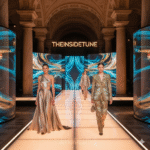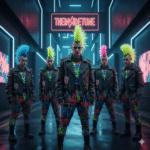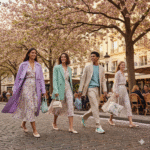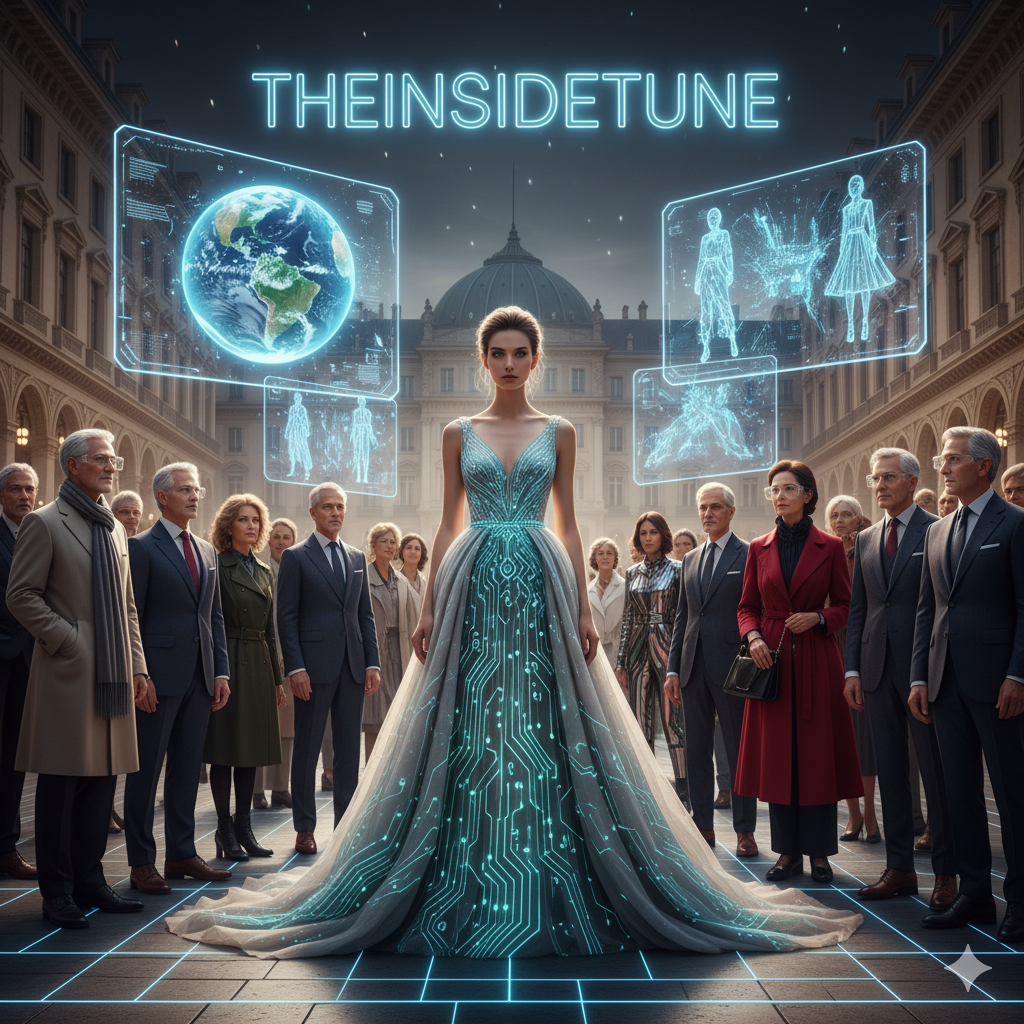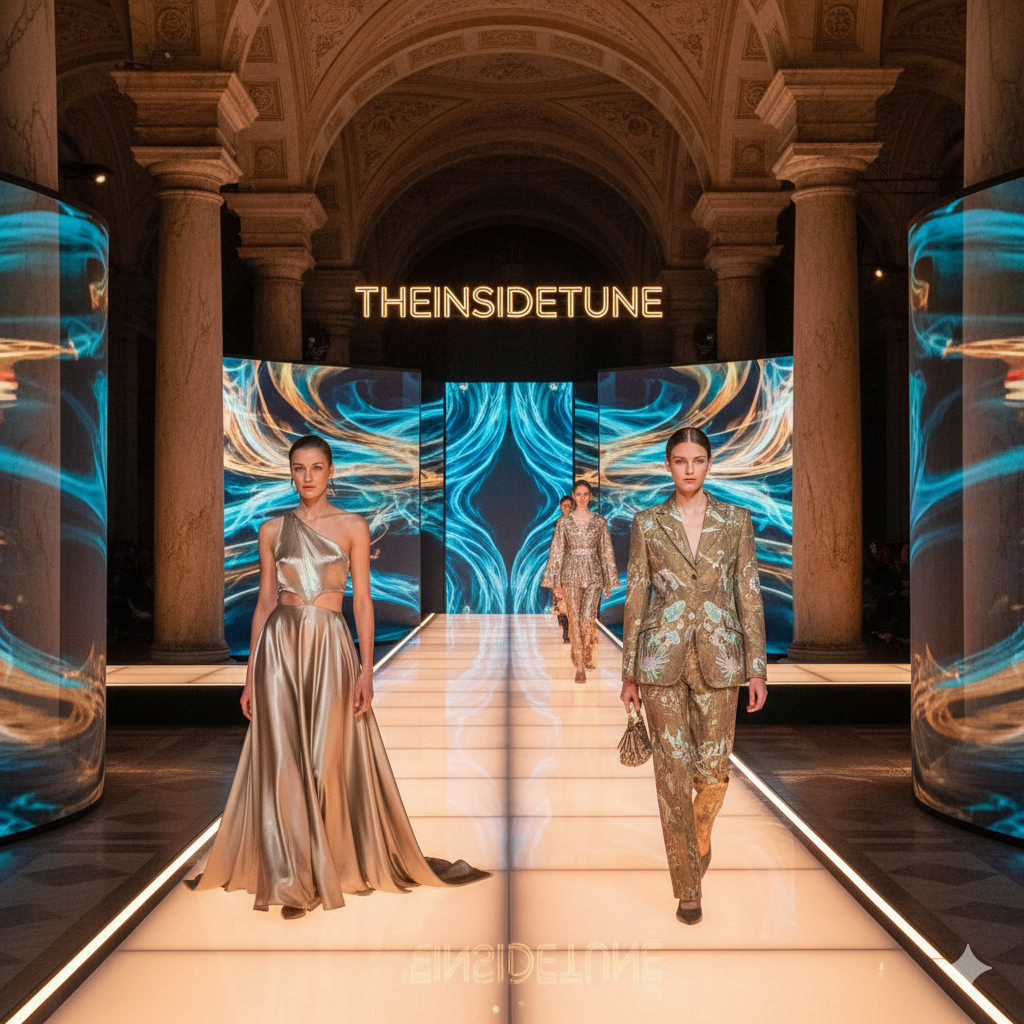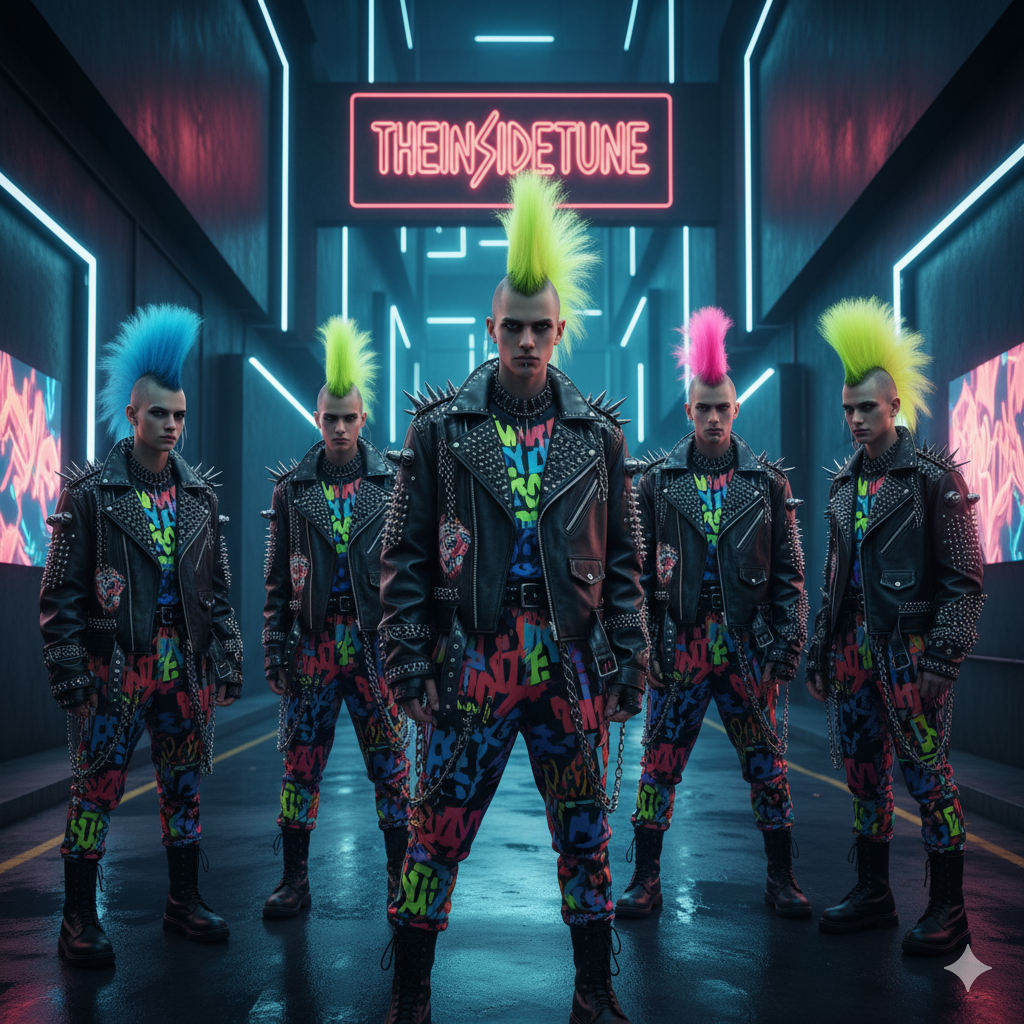AI in Fashion 2025; AI, Innovation, and Europe’s Role as Trendsetter🌍✨
Introduction: Fashion Meets Technology in 2025 👗🤖✨
The Rapid Evolution of Technology in Fashion ⚡👠
Fashion has always evolved with the times, but by 2025, the pace of change is faster than ever before. What used to take years for trends to develop can now happen in months—or even weeks—thanks to digital innovation. Technology is no longer a backstage helper; it’s center stage, influencing everything from how clothes are designed to how we wear them.
Smart fabrics, digital runways, and AI-driven design platforms are making fashion more interactive and futuristic. Instead of relying only on intuition, brands are now guided by data and algorithms that capture the pulse of culture in real time. This isn’t just progress—it’s a revolution in how creativity and technology coexist.
For everyday people, this means fashion is becoming more accessible, more personal, and more sustainable. Whether it’s trying on outfits in a virtual mirror or buying digital clothes for the metaverse, technology has changed fashion from being a seasonal cycle to an ongoing, 24/7 experience.
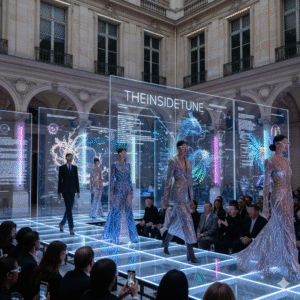
AI: The Invisible Hand Shaping Fashion 🤖👗
Artificial Intelligence has become the silent stylist working behind the scenes of the global fashion industry. By 2025, AI doesn’t just support designers—it inspires them. Algorithms can scan millions of social media posts, online searches, and global buying patterns to predict what styles will rise next. It’s like fashion forecasting with a supercharged crystal ball.
But AI’s influence doesn’t stop at design. It plays a vital role in retail, personalizing shopping journeys and offering tailored recommendations to customers. From AI chatbots acting as virtual stylists to AR-powered fitting rooms, technology makes fashion feel more human and intimate than ever before.
Perhaps its biggest impact is on sustainability. AI helps brands reduce waste by forecasting demand, streamlining supply chains, and even designing clothes with recycling in mind. This positions fashion not only as a creative industry but also as a responsible force for good in a world facing climate challenges.
Europe: The Global Trendsetter 🌍🇫🇷🇮🇹🇬🇧
Europe has always been the heartbeat of global fashion—and in 2025, it continues to lead the way in blending heritage with innovation. Cities like Paris, Milan, and London remain cultural beacons, but now they’re also hubs of FashionTech, where luxury houses and startups collaborate to bring futuristic ideas to life.
European brands are setting global standards by experimenting with AI-generated couture, digital fashion shows, and smart sustainability practices. For example, luxury labels are embracing AI for design inspiration, while fast-fashion giants use it to optimize production and reduce waste. This balance of creativity and technology makes Europe a global role model.
The continent’s consumers are just as forward-thinking. Europeans are quick to adopt AR shopping tools, invest in digital fashion assets, and support eco-conscious brands. With its deep-rooted fashion history and innovative spirit, Europe is shaping not just trends but the very future of how the world experiences fashion.
FashionTech Trends in 2025 🌐✨
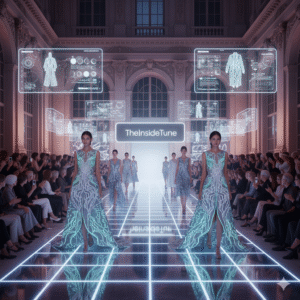
Spatial Computing and Augmented Reality (AR) 🕶️👗
Shopping has never felt so immersive. In 2025, spatial computing and AR are transforming fashion stores and online platforms across Europe. Instead of guessing how a jacket might fit or how sneakers look with your outfit, you can now step in front of an AR mirror or use your phone to see a real-time overlay of the item on your body.
Luxury brands are leading the charge. Gucci, for example, allows customers to try on sneakers virtually through its app, while Balenciaga has experimented with AR-powered campaigns that let users “wear” digital pieces online. High-street retailers like Zara are integrating smart mirrors into flagship stores, turning shopping into an interactive experience.
The best part? These tools reduce the frustration of returns and boost buyer confidence. You leave the store (or checkout online) knowing exactly how you’ll look—making fashion feel not just stylish but also seamless and fun.
3D Clothing Design for Sustainability 🌱🧵
Behind the scenes, fashion designers are swapping scissors and fabric swatches for 3D design software. By 2025, most European fashion houses rely on digital prototypes before creating physical samples. This means fewer wasted textiles, less energy consumption, and collections that reach consumers faster.
Stella McCartney, a pioneer in sustainable luxury, uses 3D design to test eco-friendly materials digitally before production. Even mainstream retailers like H&M and ASOS are turning to 3D modeling, ensuring their collections can be tested virtually for fit and style before hitting the racks.
For shoppers, this shift means more eco-conscious fashion choices. Every purchase carries less hidden waste, proving that beauty and sustainability can go hand in hand. It’s a quiet revolution, but one that shows technology isn’t just serving fashion—it’s serving the planet, too. 🌍✨
Generative AI and Diffusion Models 🤖🎨
Fashion campaigns in 2025 are no longer limited by budget-heavy photoshoots or location scouting. Generative AI tools create photorealistic imagery, graphics, and even marketing videos, allowing brands to test ideas quickly and bring bold concepts to life.
Balmain, for instance, has experimented with AI-generated models to showcase collections online, while digital-only fashion houses like The Fabricant use diffusion models to create stunning visuals for the metaverse. By offering virtual models of various sizes, body types, and skin tones, brands can finally show inclusivity that feels real and relatable.
This technology also levels the playing field. Smaller designers who once couldn’t afford big campaigns can now use AI tools to compete with luxury giants. The result is a more diverse fashion landscape, where creativity thrives without financial barriers.
Blockchain for Supply Chain Transparency 🔗📦
In 2025, trust matters just as much as style. Consumers want to know where their clothes come from, who made them, and whether the process was ethical. Blockchain technology is giving them that transparency, creating digital records for every step of a garment’s journey.
Luxury brands like LVMH (parent of Dior and Louis Vuitton) have already launched blockchain platforms that verify authenticity and trace sourcing. Meanwhile, smaller sustainable European labels are using blockchain to prove that their fabrics are organic, ethically sourced, and fair-trade certified.
For shoppers, this means more informed choices. Imagine scanning a QR code on your Zara jacket and instantly seeing whether the cotton was grown responsibly and how much carbon was saved in its production. Fashion becomes not only about self-expression but also about shared values.
AI-Powered Predictive Trend Forecasting 📊👠
Guesswork is out, and data-driven foresight is in. Fashion has always been about anticipating the next big thing, but in 2025, AI is making this science more precise. Algorithms analyze runway images, TikTok trends, Instagram hashtags, and even consumer purchase habits to predict what will be hot tomorrow.
Trend-forecasting agencies in Europe, like WGSN, now rely heavily on AI-powered systems to provide insights to both luxury houses and fast-fashion chains. For example, ASOS uses predictive analytics to stock up on trending items before demand spikes, while brands like Prada experiment with AI to guide seasonal color palettes.
For consumers, this means collections that feel incredibly “in the moment.” That jacket you see on a Milan runway today could be available in your city within weeks—thanks to AI helping brands move faster, smarter, and more sustainably.
✨ In 2025, these FashionTech innovations are proving one thing: style and technology are no longer separate worlds. From AI and AR to blockchain and 3D modeling, the future of fashion feels more personal, inclusive, and responsible. And with Europe leading the way, the global fashion stage is evolving into something smarter, greener, and undeniably exciting.
AI-Driven Personalization and Customer Experience 🤖👗✨
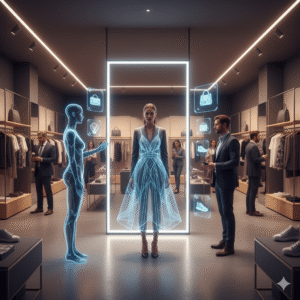
Personalized Style Recommendations 🎯👠
In 2025, fashion feels more personal than ever. Gone are the days of scrolling endlessly through thousands of products, only to feel overwhelmed. Today, AI algorithms act like personal stylists, analyzing your size, body type, favorite colors, browsing patterns, and even your location to deliver recommendations that feel tailor-made.
Imagine opening your favorite fashion app while in Paris during winter. Instead of being bombarded with bikinis or light dresses, your feed is filled with chic trench coats, ankle boots, and cozy scarves styled for the Parisian streets. Now picture browsing from Barcelona in the same season—the AI shifts gears, showing you breezy Mediterranean layers perfect for a sunnier lifestyle. The magic? Every shopper gets a wardrobe curated for their world.
This hyper-personalization doesn’t just save time; it builds trust. Customers begin to feel like brands understand them. It’s not just shopping anymore—it’s receiving a digital wardrobe consultation every time you open an app.
AI Shopping Assistants 🛍️💬
Step into a store in Milan, and instead of flipping through racks alone, you’re greeted by an AI assistant—right on your phone or even through a smart mirror. These virtual fashion advisors know what you like, what you bought last season, and even what’s trending among people with a style similar to yours.
Big players like Zalando and H&M are already testing this. Their AI chatbots guide you like a friendly shopping companion, offering styling tips (“This skirt pairs perfectly with your last purchase”) or even suggesting pieces you might not have considered but are trending in your area. Over time, the AI learns you better than you know yourself.
And here’s where the magic happens: people feel connected. Instead of being just another customer, you feel like the brand is speaking directly to you—your personality, your vibe, your lifestyle. That emotional connection leads to loyalty, repeat purchases, and even customers proudly showing off “my AI stylist” experience.
Virtual Fitting Rooms and AI Try-On 🕶️👖
Perhaps the biggest game-changer in 2025 fashion is the rise of virtual fitting rooms. Shoppers have always struggled with online fashion—sizes differ, colors look off, and return boxes pile up at the door. But with AI-powered AR, you can now “try on” clothing and accessories in real time.
Picture this: you’re standing in front of your phone camera, and with a tap, a flowing Balenciaga dress appears on your body, fitting your shape exactly. Turn sideways? The AI shows how the fabric drapes. Want to see it in another color? Just swipe. Even shoes, handbags, and sunglasses can be tested instantly, without ever touching the product.
Brands like Zara are already experimenting with smart mirrors in stores, while luxury houses like Dior and Louis Vuitton are integrating AI try-ons for footwear and bags. These tools not only cut down on returns (a huge sustainability win 🌍) but also give customers a new level of shopping confidence. Instead of doubting whether something will suit them, they see it instantly.
The Emotional Side of AI in Fashion 💡❤️
Here’s the part many overlook: AI isn’t just about algorithms and data. It’s about emotions. People love to feel seen, valued, and stylish—and AI-driven personalization delivers exactly that. It takes away the stress of choice paralysis, the frustration of ill-fitting clothes, and the boredom of scrolling endlessly. Instead, it makes shopping fun, interactive, and inspiring.
A customer in Paris might discover the perfect winter coat within minutes, while a student in Berlin might get outfit suggestions styled to their budget. The technology adapts to everyone, from luxury buyers to fast-fashion lovers. That’s the beauty of personalization—it democratizes fashion.
✨ With AI-driven personalization, fashion in 2025 is no longer about chasing trends blindly—it’s about finding what fits you. Every recommendation, every assistant, every try-on tool is designed to celebrate individuality. And as Europe leads the charge, one thing is clear: the future of fashion isn’t just smarter—it’s more human. 💫
Sustainability and Efficiency Enabled by AI 🌱🤖
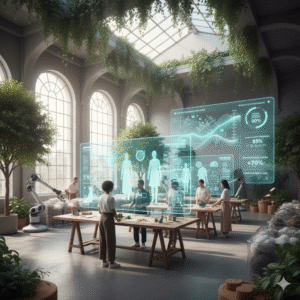
Smarter Supply Chains, Less Waste 🚚♻️
One of the fashion industry’s biggest challenges has always been overproduction. Shelves filled with unsold clothes often end up heavily discounted—or worse, destroyed. By 2025, AI is transforming this problem into a solution. Using predictive analytics, brands can better understand what styles, sizes, and colors people will actually buy.
This means factories only produce what’s needed, reducing mountains of unsold stock and textile waste. For consumers, it translates into fresher collections, fewer “dead trends,” and clothing that feels timely and intentional. Fashion becomes not just stylish, but sustainable.
Recycling and Fiber Identification 🔍🧵
AI is also stepping into recycling, one of the toughest nuts to crack in fashion. Separating polyester from cotton or identifying blends has always been labor-intensive. Now, advanced AI-powered machines can scan and sort fibers with incredible accuracy, helping recycling facilities recover more usable material.
Imagine millions of old garments being given a second life—not dumped in landfills, but transformed into new textiles. Brands in Europe are already piloting projects where AI systems identify fabric blends instantly, making recycling more efficient and cost-effective. The future of circular fashion is finally becoming a reality.
Forecasting Demand, Managing Inventory 📊👕
Another big win? Inventory management. AI-driven demand forecasting uses real-time data from social media, runway shows, and even local weather reports to predict what consumers will want before they start shopping.
A sneaker brand in Berlin, for instance, can plan stock based on predicted festival fashion demand in summer. Meanwhile, a Parisian boutique can align inventory with the latest couture-inspired streetwear trends. This reduces storage costs, cuts unsold items, and ensures shoppers find the pieces they want—without the frustration of “sold out” signs.
Eco-Friendly Materials and AI-Backed Innovation 🌍✨
AI isn’t only about efficiency—it’s also inspiring designers to dream bigger with eco-friendly materials. From lab-grown leather alternatives to plant-based fabrics, designers now use AI to test durability, texture, and aesthetics before committing to physical production.
This means fewer failed experiments, faster innovation, and a smoother path to sustainable alternatives. Think of mushroom leather handbags, algae-based sneakers, or biodegradable dresses—all made possible through AI’s ability to simulate and optimize material performance.
On-Demand Production 🧵⚡
A growing number of brands are shifting towards on-demand production, powered by AI. Instead of mass-producing garments months in advance, clothing is only made when a customer orders it. This drastically reduces overstock and makes fashion more responsive to individual demand.
Brands like Unspun in Europe and Printful globally are already using AI-driven tools for personalized jeans, custom-fit pieces, and made-to-order collections. The result? Waste reduction, personalized products, and a stronger connection between customer and brand.
AI as a Creative Partner in Fashion Design 🎨🤖✨
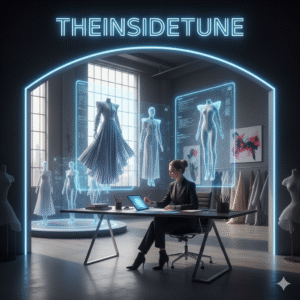
Collaborating with Designers 🧑🎨💡
Far from replacing creativity, AI is becoming a designer’s best friend. By analyzing huge datasets of patterns, colors, and past collections, AI can suggest unique design combinations that humans may never think of. Designers still lead the process, but now they have a digital “co-creator” who sparks inspiration.
For example, a London-based designer might ask an AI model to generate 50 variations of a jacket silhouette—combining vintage cuts with futuristic textiles. The designer picks, tweaks, and refines, turning machine inspiration into wearable art.
AI-Generated 3D Designs and Virtual Fashion Shows 🖥️👗
Fashion houses are increasingly skipping physical prototypes and creating 3D designs first. These digital garments can be previewed on avatars or even showcased in virtual fashion shows—events that reach global audiences without the environmental footprint of traditional runways.
Balenciaga and Gucci have already tested virtual shows and digital-only outfits for gaming and social media platforms. In 2025, it’s not unusual to “buy” a jacket for your digital avatar before purchasing a physical version. This blending of physical and digital fashion is opening up entirely new creative worlds.
Speed Meets Creativity ⏳✨
Traditionally, fashion cycles take months from sketch to store. But with AI handling simulations, testing, and rapid prototyping, timelines shrink dramatically. Designers can bring fresh looks to life in weeks—or even days—without sacrificing artistry.
The benefit? Consumers enjoy faster access to trends, while designers gain the freedom to experiment more boldly. Fashion becomes a playground of innovation, where AI helps accelerate imagination instead of limiting it.
✨ In short, AI isn’t just optimizing fashion—it’s humanizing it. It cuts waste, respects the planet, and pushes creativity further than ever before. From smarter supply chains to eco-friendly fabrics and virtual couture, Europe is showing how technology and artistry can weave a future where fashion is not only stylish but also responsible. 🌍👗💫
Challenges and Ethical Considerations ⚖️🤖👗
Data Privacy in Personalized Fashion 🔐🛍️
There’s no doubt—AI-driven personalization feels magical. You log in, and suddenly your favorite fashion app seems to know you better than you know yourself. It suggests the perfect jacket for your size, the right pair of boots for your climate, and even your favorite color palette.
But here’s the catch: that kind of magic requires an incredible amount of personal data. We’re talking measurements, body scans, browsing history, shopping preferences, and sometimes even geolocation. For many, the thought of a brand holding so much intimate information sparks a serious question: Where does all this data go, and who else has access to it?
Scandals in other industries—where personal information was leaked or misused—have made fashion consumers cautious. And in Europe, where data protection laws like GDPR are among the strictest in the world, people expect absolute transparency. Brands that openly explain how they collect, store, and use data are more likely to gain trust. In fact, privacy protection is quickly becoming a selling point—because in 2025, feeling safe is just as important as looking stylish.
The Risks of AI-Generated Content 🎭🖼️
AI is becoming the ultimate creative assistant for fashion brands, generating stunning campaigns, digital fashion shows, and even photorealistic models that showcase clothing across all body types. It sounds exciting—but it comes with shadows.
Enter the world of deepfakes. These hyper-realistic images and videos, created by AI, can blur the line between truth and fabrication. Imagine scrolling Instagram and seeing your favorite celebrity “wearing” a dress they never actually modeled. Or picture a shopper falling in love with an outfit online, only to realize it doesn’t exist in real life—just an AI-generated illusion.
This isn’t just misleading—it erodes trust. To keep customers confident, brands are starting to label AI-generated imagery, much like food labels in supermarkets. Saying “this look was created with AI” isn’t a weakness; it’s a badge of honesty. In a world flooded with digital visuals, consumers crave clarity. Transparency becomes the new luxury.
Europe’s Role in AI Regulation 🇪🇺📜
Europe has always been a trailblazer when it comes to ethical tech. In 2025, the EU AI Act—the world’s first comprehensive AI law—is shaping how fashion brands can (and cannot) use artificial intelligence. Unlike in some parts of the world, European consumers enjoy strong protections that force brands to respect human rights, privacy, and fairness.
This means companies have to audit their algorithms to prevent bias—so that AI-powered tools don’t, for example, exclude certain body types or prioritize one beauty standard over another. It also means greater accountability for data use, content creation, and customer consent.
For many fashion brands, this feels like a big challenge. But forward-thinking companies see it as an opportunity to stand out. Imagine a label that not only promises sustainable fabrics but also guarantees ethical AI practices—safe data, unbiased recommendations, and honest digital campaigns. In Europe’s conscious consumer market, this could become as desirable as eco-friendly materials or cruelty-free production.
Beyond Rules: The Human Factor 💡❤️
While regulations and policies matter, at the core of AI ethics lies something deeply human: trust and respect. Fashion is emotional—it’s how we express who we are. If AI systems mishandle data, deceive customers, or push biased beauty ideals, it doesn’t just hurt reputations; it hurts people.
That’s why leading brands in Europe are starting to include ethical AI charters in their values, alongside sustainability pledges. They’re building advisory boards with ethicists, technologists, and even customers to ensure AI is being used fairly and responsibly. Some are even giving customers dashboards where they can choose what data they want to share—or not share at all.
This new level of openness changes the game. Shopping doesn’t feel like you’re just clicking through endless catalogs—it feels like you’re part of a respectful, transparent conversation. And that’s exactly what builds loyalty in 2025.
Walking the Tightrope ⚖️✨
So here’s the big takeaway: the future of AI in fashion is a balancing act. On one side, there’s innovation—personalized shopping, dazzling AI creativity, and sustainability breakthroughs. On the other, there’s risk—privacy concerns, misinformation, and the temptation to cut ethical corners.
The brands that thrive will be those that master the balance. They’ll show that technology can serve humanity, not overshadow it. They’ll prove that AI can make fashion more inclusive, more sustainable, and more exciting—without sacrificing honesty or ethics.
At the end of the day, the most stylish thing a brand can wear in 2025 isn’t just a trend—it’s trust. And in Europe, trust is always in fashion. 🌍👗✨
Future Outlook for AI in European Fashion 🔮👗🤖
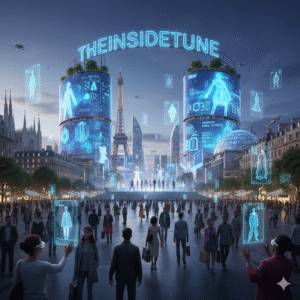
Market Growth and Adoption Rates 📈💶
The numbers don’t lie—AI in fashion is no longer a buzzword, it’s a booming reality. By 2025, Europe’s fashion-tech market is projected to grow at double-digit rates, with AI-powered solutions leading the charge. From predictive analytics and smart supply chains to AI-driven personalization, adoption is spreading across luxury houses, high-street brands, and even independent designers.
Luxury giants in Paris, Milan, and London are investing heavily in AI not just to boost sales, but to enhance the entire customer journey. Meanwhile, fast-fashion brands are embracing AI to stay competitive, using it for demand forecasting and virtual try-ons to cut costs and reduce returns. Even small ateliers are finding accessible AI tools that let them scale sustainably and creatively.
The message is clear: AI is no longer reserved for the tech elite. It’s becoming the standard operating system for fashion in Europe, shaping how clothes are made, marketed, and experienced.
The Convergence of Human Creativity and AI 🎨🤝🤖
One of the most exciting parts of the future is how AI and human creativity will continue to intertwine. Designers bring vision, storytelling, and cultural insight. AI brings speed, data, and endless experimentation. Together, they form a partnership that could reshape fashion design forever.
Imagine a designer in Milan sketching a gown while an AI system generates 50 variations instantly—different fabrics, silhouettes, and embellishments. Instead of replacing creativity, AI acts as a digital muse, helping designers push boundaries while still anchoring the artistry in human imagination.
This balance is what will define Europe’s leadership in the AI-fashion era. Unlike fast, faceless automation, European brands are using AI to enhance artistry—ensuring technology amplifies creativity, not erases it. Fashion becomes not just futuristic, but deeply human.
Growth of Digital Fashion and Virtual Experiences 🌐👠
Another undeniable trend is the expansion of digital fashion. Virtual clothing, fashion NFTs, and avatar styling are no longer just novelties—they’re billion-euro industries. In 2025, consumers in Europe are buying outfits they’ll never physically wear but will flaunt on Instagram, gaming platforms, or in the metaverse.
Virtual fashion shows are becoming mainstream, with major houses like Balenciaga, Prada, and Gucci already experimenting. These digital showcases reach millions globally without the environmental footprint of traditional runways. Customers can even “try on” digital-only collections before committing to a physical purchase.
For Gen Z and Gen Alpha, digital fashion is as real as physical fashion. Their wardrobes aren’t limited to closets—they extend into digital spaces. As Europe continues to innovate, we’re seeing fashion expand from streets and boutiques to screens and virtual worlds—a new frontier where style knows no boundaries.
A Bold but Responsible Future ⚖️🌍
The outlook for AI in European fashion is dazzling—but it’s also deeply tied to responsibility. Market growth will continue, digital fashion will expand, and AI will empower creativity. But alongside the innovation comes a collective awareness: fashion must stay sustainable, ethical, and inclusive.
Europe is uniquely positioned to lead this charge. With strong regulations, a culture of craftsmanship, and a consumer base that values both style and conscience, the continent is showing the world how to merge tradition with technology. The future isn’t just about smart clothes—it’s about smarter choices.
✨ In short, the future of AI in European fashion is bright, bold, and beautifully human. It’s a space where data meets design, where sustainability meets style, and where physical and digital fashion coexist. One thing is certain: Europe isn’t just adapting to AI—it’s setting the runway for the rest of the world. 💫👗🌍
Conclusion 🌍👗🤖
As we stand in 2025, it’s clear that AI and FashionTech are no longer side notes in the story of fashion—they are central chapters. From the creative sparks in design studios to the seamless experiences in digital fitting rooms, AI is weaving itself into every thread of the industry. Europe, with its deep-rooted traditions in couture and its forward-thinking embrace of innovation, has become the global runway for this revolution.
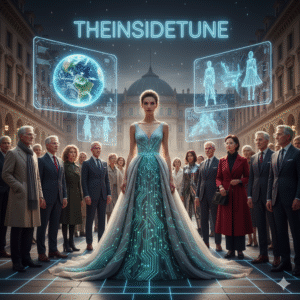
But this transformation is not just about new tools or shiny tech—it’s about redefining what fashion means. Fashion has always been a mirror of society, reflecting our desires, identities, and values. Now, with AI as both a partner and catalyst, it reflects something deeper: our ability to innovate responsibly, to imagine boldly, and to care more consciously for people and the planet.
The true beauty of this new era lies in the balance. Yes, AI makes fashion faster, smarter, and more personalized. But its real potential shines when combined with human creativity, ethical responsibility, and a commitment to sustainability. The magic happens when algorithms amplify imagination, when supply chains protect resources, and when virtual worlds open doors to inclusivity rather than exclusivity.
For brands, the future is a call to lead with courage and conscience. This means embracing technology, not as a shortcut, but as a tool to craft experiences that are more meaningful, transparent, and inspiring. For consumers, it’s a reminder that every choice matters—whether we’re buying a sustainable garment, exploring digital fashion, or choosing to support brands that respect both innovation and ethics.
Europe’s role is particularly inspiring. With its mix of timeless heritage, cutting-edge innovation, and strict ethical regulations, it has the chance to not just set trends, but to shape the global standard for responsible AI in fashion. Imagine a future where “Made in Europe” doesn’t just mean luxury craftsmanship, but also sustainable production and ethical technology. That’s a runway worth walking.
✨ In the end, the question isn’t whether AI belongs in fashion—it already does. The real question is how we, as brands, designers, and consumers, choose to guide it. If we embrace this future thoughtfully, we can create an industry that is not only stylish, but also sustainable, ethical, and deeply human.
Because at its core, fashion has always been about expression, identity, and connection. AI doesn’t replace that—it enhances it. The future of fashion is here, and it’s brighter, bolder, and more responsible than ever before. 🌟👠🌿
🌿👗 “The future of fashion isn’t just about being high-tech—it’s about being gentle on the planet, fair to the people who make our clothes, and still letting us look and feel amazing.”
🤖✨ “AI is driving so much of this change, but at the end of the day, it’s our creativity, our values, and our imagination that will truly shape what fashion becomes.”
🌍💫 “Europe isn’t simply catching up with trends—it’s setting the pace and inspiring the rest of the world with bold, forward-looking fashion.”
👠🌟 “Fashion has always been a way to tell our stories, and now, with AI stepping in as a partner, we get to write the next chapter together in exciting new ways.”
💡❤️ “Real style has never been about choosing between the old and the new—it’s about weaving tradition and technology together to create something we can all be proud to wear.”


